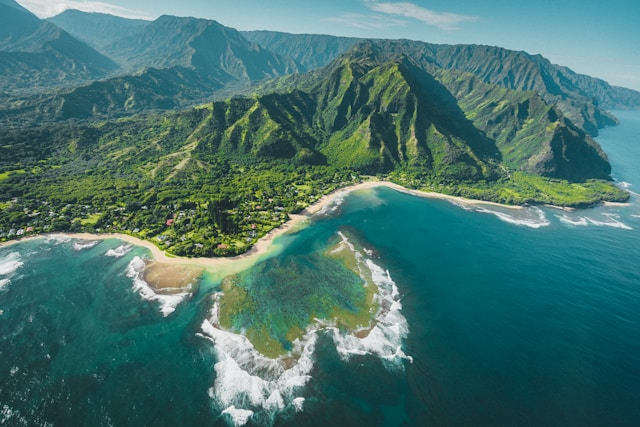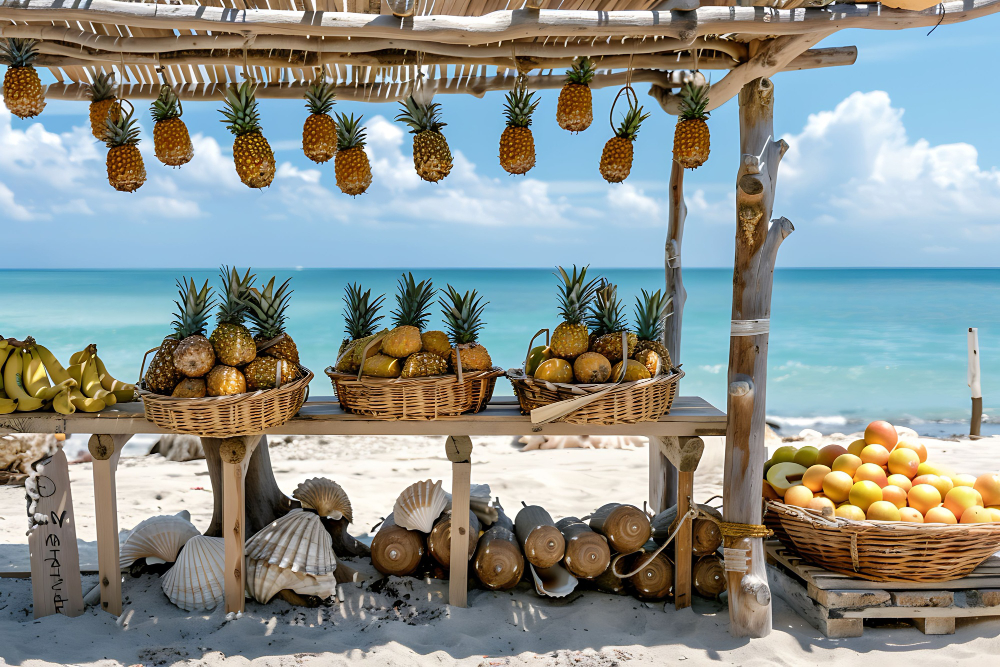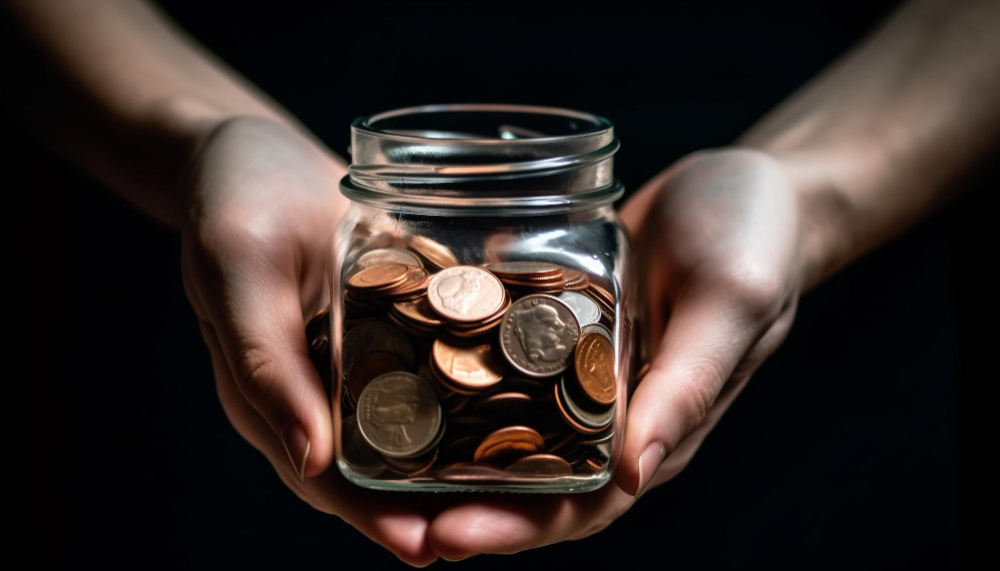Are you planning a trip to Hawaii or planning to spend some of your years here? If yes, then this article is just for you!
While Hawaii is renowned for its stunning landscapes, hiking trails, unique culture, and tropical paradise allure, anyone who have stayed here or come here for a vacation, they must know how expensive this island could be.
Whether it is buying a property, or renting one for your vacation to all the groceries, costs in Hawaii are consistently higher than on the mainland.
Now, if you are wondering why is Hawaii so expensive, this article will delves into the main factors that contribute to Hawaii’s high cost of living and why it remains so expensive despite efforts to address these issues.
10 Reasons Why Hawaii Is Extra Expensive
If you see as a layman, you yourself will know that main reason for the costly character of Hawaiiis due to it being an island. Since it is isolated from the mainland, all the expenses are actually doubled making it difficult for the people to live with those prices.
As the U.S. Census Bureau researched, they found out that the median household income of the residents of Hawaii is $95,322. While this may look a lot, its actually isn’t! This is because one has to keep paying more even for the basic needs like food. And trust me, even the average energy bill is higher in Hawaii. Here we have listed 10 reasons for Hawaii to be extra expensive.

1. Geographical Isolation
As we mentioned, Hawaii is located remotely in the middle of the Pacific Ocean. This is perhaps the most imporatant factor contributing to its high cost of living.
Hawaii is about 2,400 miles away from California, which means that nearly every good and service must be imported. This dependency on imports increases the cost of transporting goods, which in turn drives up prices for consumers.
This therefore directly impacts the shipping costs. People will experience high shipping costs even for basic goods like groceries, clothing, and building materials. Unlike many states that have railways, highways, and trucking networks to reduce transportation costs, Hawaii relies on sea and air transport for most of its goods.
As a result, the prices of imported items, from fresh produce to household goods, include hefty transportation fees. This geographic isolation also applies to energy, which brings us to the next factor.
2. High Energy Costs
Hawaii’s electricity rates are more than double the national average, according to the U.S. Energy Information Administration. Also, the energy cost is one of the highest in the nation with Hawaii.
Its geographical location limits its access to natural resources, including oil, gas, and coal. Importation of petroleum-based fuels has been a significant means of generating part of the electricity used on these islands.
Transporting oil via ship makes Hawaii highly susceptible to changes in global oil prices, which can easily be translated to impacts on electricity rates.
The state has taken enormous steps toward improving renewable-energy sources, so it will take some time before the shift really makes costs go down. An average family in Hawaii even has to pay high prices for keeping houses cool, their food refrigerated, and their devices working.
3. Real Estate and Limited Land Availability
The Hawaiian islands are a group of islands rather small. Let’s put it this way, Hawaii is a small state with scarce land resources. According to the United States Census Bureau, Hawaii has a total land area of 6420.7 square miles.
When you have limited land, it means that real estate is in demand, and its prices have gone through the roof. Also, the fact that Hawaii is a good place to stay, retire, or even simply own a vacation house added fuel to the fire when the prices for increased property values were sought.
Now, although there many be acres of land in Hawaii, but only a significant portion of Hawaii’s land is conserved or zoned for agricultural, rural, or conservation use. This limitation in land supply leads to a situation of low supply, which ultimately increases the demand and thus sustains high prices.
In addition, with an ever-increasing population and limited rental apartments, people are now competing hard to get themselves some homes, a reason why most of the homes have resulted in high rents that many locals cannot afford.

4. High Food Costs
While I can bet you that you get really delicious food in Hawaii, the food costs here is significantly more expensive than on the mainland due to the need for importation.
Around 85–90% of Hawaii’s food supply is imported, which adds substantial transportation costs to food prices. The reliance on imports also makes the islands vulnerable to supply chain disruptions, which became especially evident during the COVID-19 pandemic.
Additionally, the logistics of shipping food to Hawaii, storing it, and distributing it across the islands further increase prices. Fresh fruits and vegetables, meat, dairy, and even basic pantry items cost considerably more due to these logistical challenges.
Although there has been an increasing push for local farming and sustainability efforts, local food production still does not meet the needs of the population, meaning Hawaii must continue to import a large percentage of its food.
5. Tourism Demand and Its Impact on Costs
Tourism, the sector with the highest contribution to Hawaii’s economy, still attracts millions of visitors annually. With island like the Big Island, tourism generates very much needed revenues and employment, although it keeps cost of living rather high.
Hawaii Tourism Authority, actually holds a lot of authority in the increase and decrease of the tourism in Hawaii. Demand from tourism puts prices up for everything, including hotels, restaurants, and other recreational activities; it leaves locals competing with visitors for scarce resources and space.
When we’re talking about vacation rentals and hotels, let’s not forget that Hawaii imposes a notorious 18% Transient Accommodations Tax (TAT) on hotels, vacation rentals, and timeshares, which notably raises lodging costs and ranks among the highest in the country. Additionally, those visiting the island face state fees, with a potential Green Fee on the horizon.
Also, tourism increases house prices because most houses are let out on a short-term basis as tourist accommodations instead of being used as long-term homes for the locals.
The competition from these short-term rentals has shot up the rental prices, especially in areas like Honolulu, Maui, and other tourists’ hotspots. Above all, most enterprises that cater to tourists hike their prices for locals when it comes to dining, shopping, or any other form of entertainment.
6. Import Regulations: The Jones Act
The Jones Act was passed in 1920 as a federal law, with a great impact on shipping costs to Hawaii. It simply states that cargo traveling between U.S. ports must be shipped on an American-made, American-owned, and American-crewed ship. Shipping to Hawaii, therefore is more expensive than shipping internationally.
One criticism of the Jones Act is it reduces competition and eliminates lower-cost foreign alternatives that could bring in lower prices to consumers.
It imposes additional costs on goods because Hawaii is required to utilize American ships. This kind of cost burden eventually gets passed on to consumers in higher prices.

7. Tax Structure and Government Policies
Another is the tax structure and policies of the government. Hawaii has one of the general excise taxes highest in the United States.
It applies to almost every transaction, which includes food, medical services, and rent. This tax is different from sales tax, as it is charged on business at every step of production and distribution, and the added cost usually translates to the consumer.
The state has relatively higher rates of income and property taxes than other states. Consequently, huge levies are heaped on the residents of the state, making their livelihood very expensive. This tax policy impacts individuals and firms.
High rates of these levies make products and services expensive due to the fact that businesses pass all their tax burdens to their customers. Adding the already expensive utility, house, and imported products, the tax system, thus makes it expensive to stay in Hawaii.
8. Limited Employment Opportunities and Wages
The tourism and service sector depends on tourism for a large percent of the state economy, but jobs are generally low wage and seasonal.
It is not easy to maintain any kind of lifestyle with high living costs when one lives off of tourism and service industries for their way of life. Wages in Hawaii are considered just above average and unfortunately fail to balance the cost of living in the state.
This limited job market means that the majority have to put up with low-paying or double-shift jobs just to get the most basic services. Thus, it usually gives way to costly inflation because many people cannot keep their pace in the high housing prices, groceries, and utility costs.
9. Natural Disasters and Climate-Related Costs
Hawaii is exposed to a range of natural disasters: hurricanes, volcanic eruptions, tsunamis, and hurricanes, to name a few.
To prepare for and mitigate the impact of these disasters are costly in infrastructure and emergency planning, which increases the cost-of-living expenses. Insurance for homeowners is also higher because of the potential for damage from natural disasters in Hawaii, which again adds to costs for residents.
Other easily vulnerable areas of Hawaii are coastal sections because of sea level rise due to climate change. It would cost a lot of money to safeguard coastal structures, safe water supplies, and adaptive adjustments to the changing environment, costs which are usually shouldered by residents in the form of taxes, utility rates, and property costs.
10. Lifestyle Choices and Quality of Life
Last but not least, lifestyle and quality-of-life factors determine the cost of living in Hawaii. Hawaii’s natural beauty, warm climate, and unique culture indeed make it a very attractive place to live, driving people from all parts of the world to come and live there. Most of these residents are willing to pay the high cost of living just to enjoy the benefits of living in a tropical paradise.
However, for most residents, the cost of living is also too high, with some being unable to afford modest housing, decent healthcare, and other basic things in life.
Yet the cultural value of “ohana” and “aloha” keeps on generating community and resilience within the residents even as they face financial hardships.

Hawaii Is Perfect—For Whom?
Well, for me, Hawaii has always been a special part of my life. But I can understand that not everyone is able to afford the cost of living here. If you have local businesses, there are chances that you might somehow survive in this remote location. However, these local businesses are also highly dependent on the tourism crowd and a good population on the island.
While staying here, its not possible to meet your daily expenses in just one job, rather you’ll have to do multiple jobs to deal with your everyday expenses. Since, buying a property could be expensive due to the high property tax rates, look for renting house. Although, the average rent of the houses are also higher.
According to many studies, it has been found that, for a person to easily live in Hawaii, needs to have an annual living wage of approx $113,000. So, deciding who can stay or visit in Hawaii, honestly, depends on the kind of money one makes. The more money one makes, that better are their chances of staying in Hawaii for longer time!
FAQs
Why is gas more expensive in Hawaii?
Since Hawaii doesn’t produce its own gasoline, all fuel must be imported, leading to higher costs. Refining and transportation add to these costs, and Hawaii’s state taxes on gasoline are also among the highest in the U.S.
Are there ways to reduce living costs and save money in Hawaii?
Yes, some people reduce costs by shopping at local farmers’ markets, buying in bulk, using energy-efficient appliances, and minimizing commuting by living closer to work. However, Hawaii’s overall cost of living remains high compared to most mainland states.
Is Hawaii working on solutions to reduce living costs?
Yes, Hawaii is investing in renewable energy sources to reduce reliance on imported oil, and there are ongoing efforts to support local agriculture. These initiatives could help in urban development and lower utility and food costs over time, but the overall impact on cost of living will take time to be fully realized.
Conclusion
Whether you are planning to stay in Hawaii or just planning a short visit to the North Shore, you do need a reasonable amount of money to spend the timely comfortably on the island. With the points listed above and other many factors, Hawaii is an expensive place to live.
Perhaps with these high expenses, the charm of Hawaii’s natural beauty and vibrant culture continues to entice residents and visitors alike. The cost of living in Hawaii reflects that it is the reality of maintaining a paradise in the middle of the Pacific, where its limited resources, land, and economic challenges intersect to create this unique and costly way of life.
